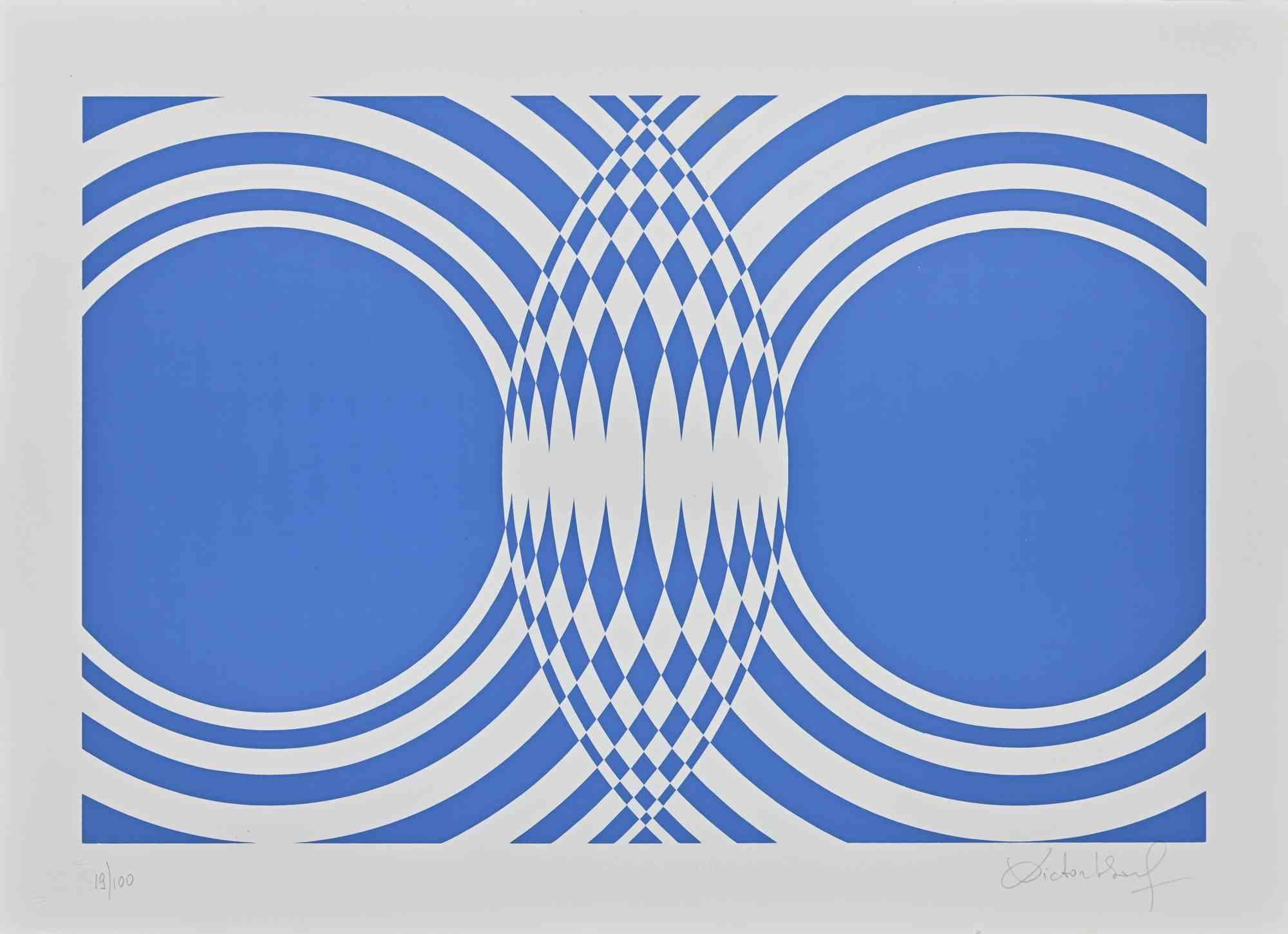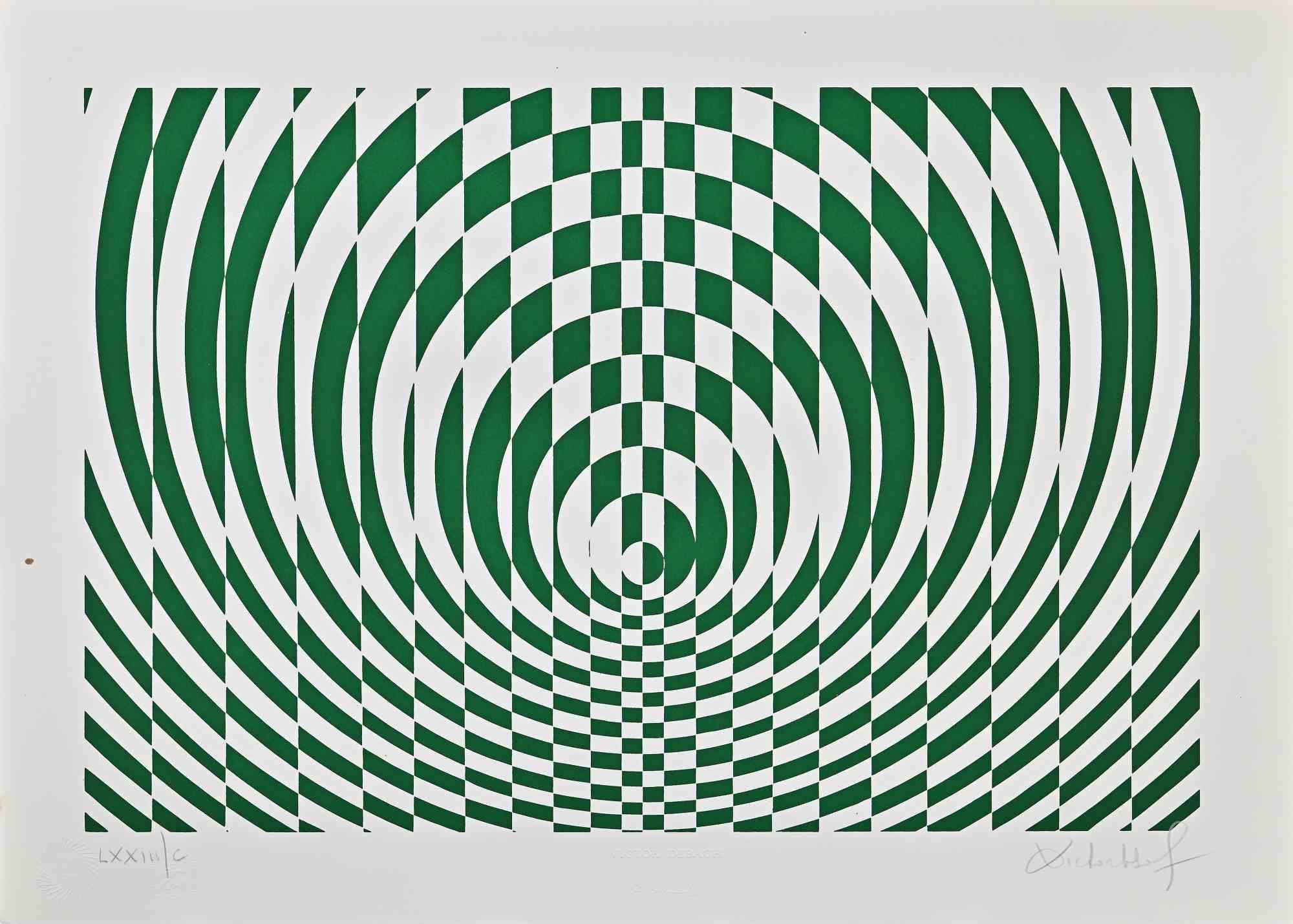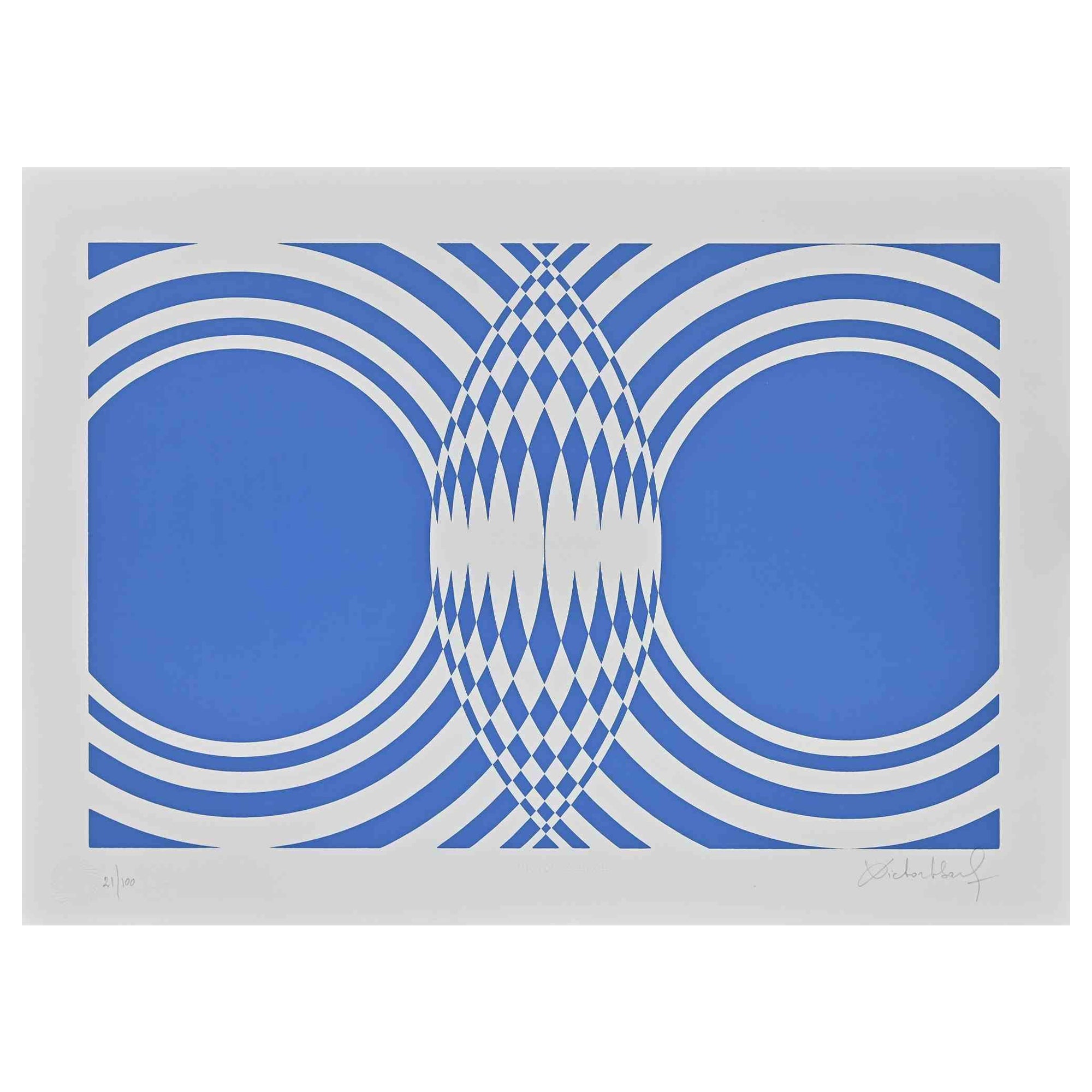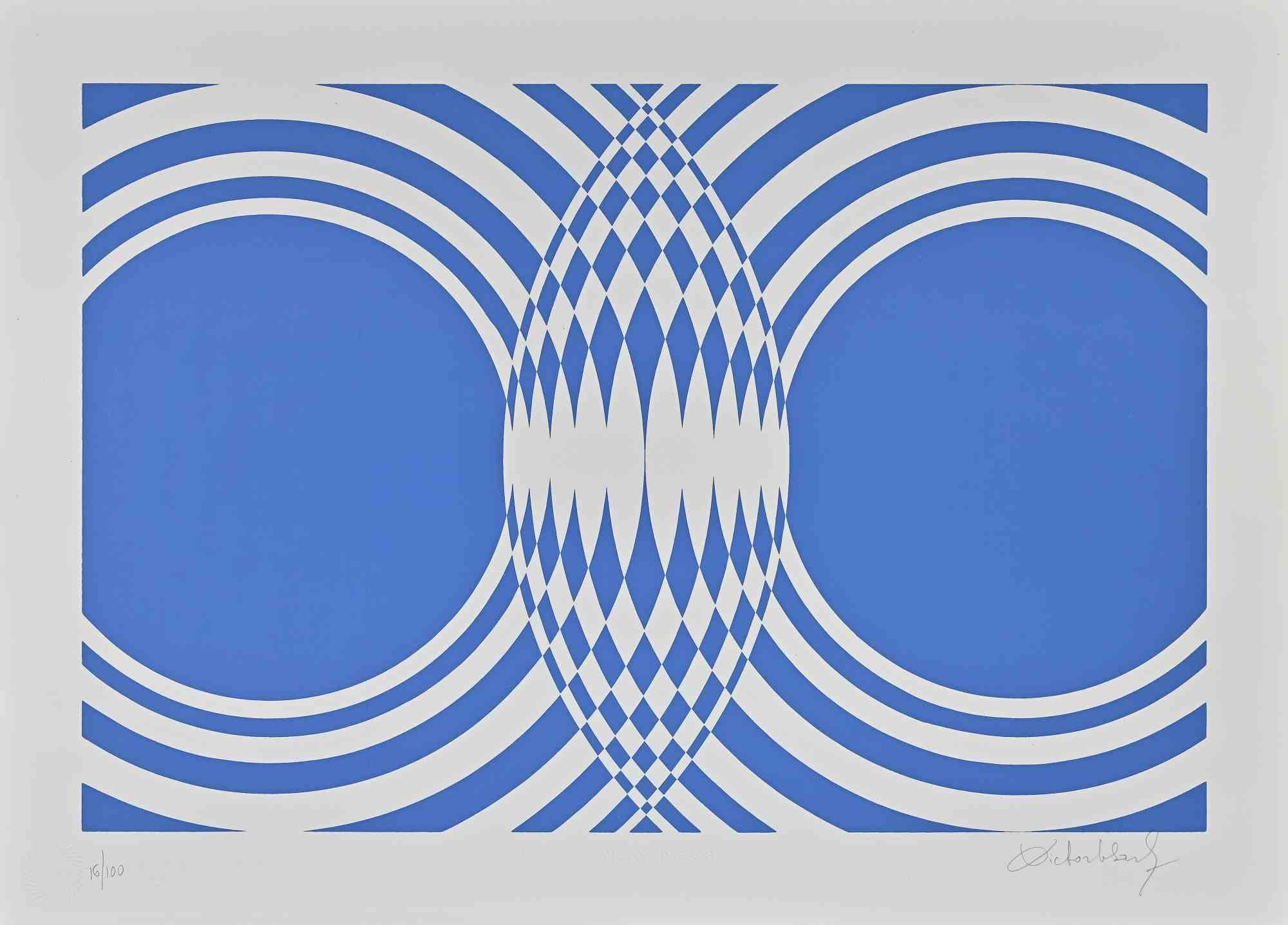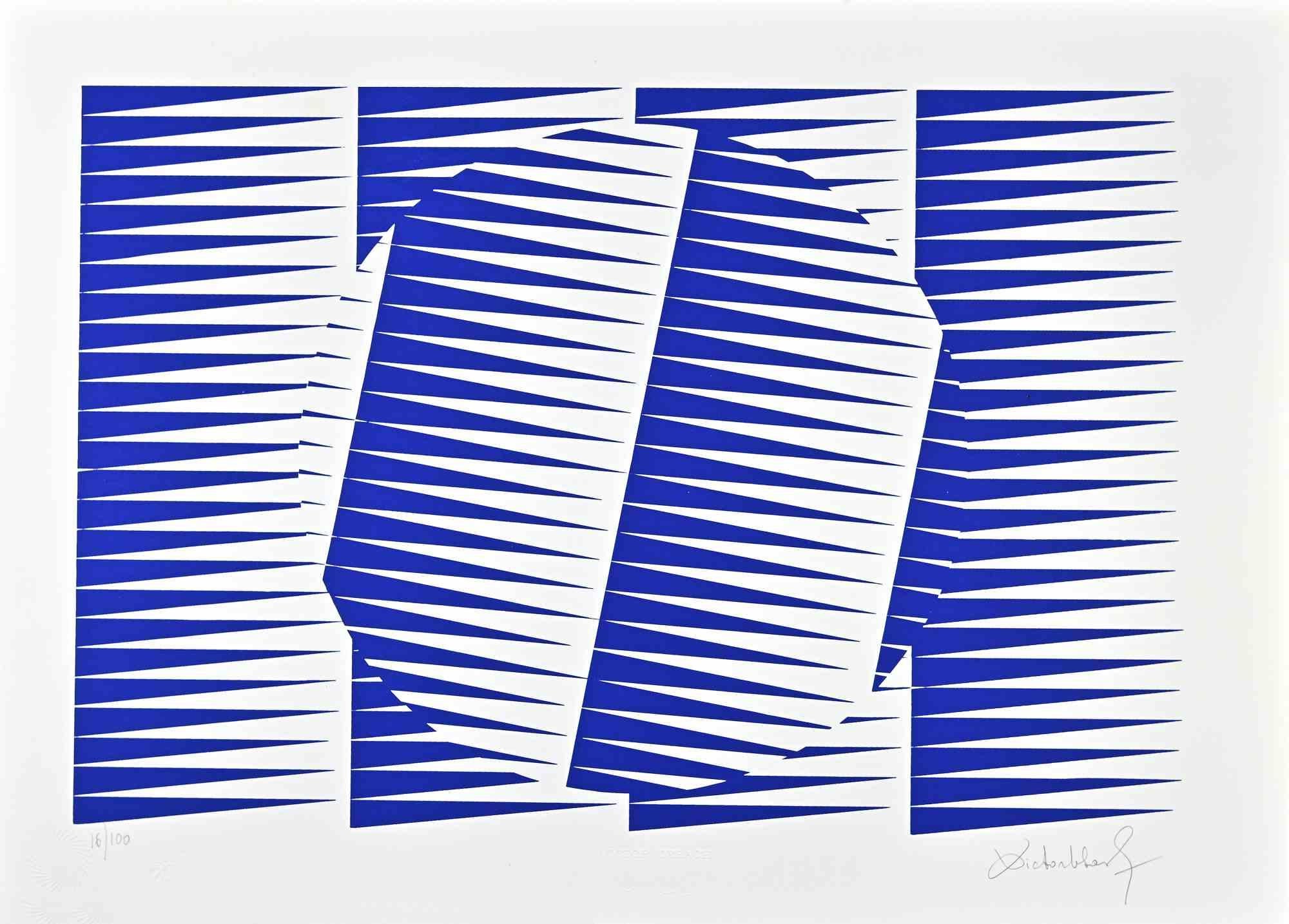Items Similar to Abstract Violet Composition - Screen Print by Victor Debach - 1970s
Want more images or videos?
Request additional images or videos from the seller
1 of 5
Victor DebachAbstract Violet Composition - Screen Print by Victor Debach - 1970s1970s
1970s
About the Item
Abstract Violet Composition is a Screen Print on Paper realized by Victor Debach in 1970s.
Limited edition of 100 copies numbered and signed by the artist with pencil on the lower margin.
Very good condition on a white cardboard.
- Creator:
- Creation Year:1970s
- Dimensions:Height: 19.69 in (50 cm)Width: 27.56 in (70 cm)Depth: 0.04 in (1 mm)
- Medium:
- Movement & Style:
- Period:
- Framing:Framing Options Available
- Condition:Insurance may be requested by customers as additional service, contact us for more information.
- Gallery Location:Roma, IT
- Reference Number:Seller: T-1357341stDibs: LU650311342062
About the Seller
4.9
Platinum Seller
These expertly vetted sellers are 1stDibs' most experienced sellers and are rated highest by our customers.
1stDibs seller since 2017
6,802 sales on 1stDibs
Typical response time: 3 hours
- ShippingRetrieving quote...Ships From: Rome, Italy
- Return PolicyA return for this item may be initiated within 14 days of delivery.
Auctions on 1stDibs
Our timed auctions are an opportunity to bid on extraordinary design. We do not charge a Buyer's Premium and shipping is facilitated by 1stDibs and/or the seller. Plus, all auction purchases are covered by our comprehensive Buyer Protection. Learn More
More From This SellerView All
- Fuchsine Composition - Original Screen Print by Victor Debach - 1970sBy Victor DebachLocated in Roma, ITHand signed and numbered. Edition of 100 prints. On headed paper.Category
1970s Op Art Abstract Prints
MaterialsScreen
- Composition VII - Original Screen Print by Franco Cannilla - 1971By Franco CannillaLocated in Roma, ITComposition VII is an original serigraph realized by Franco Cannilla in 1971. The artwork is hand-signed in pen by the artist. Edition of 40 prints. ...Category
1970s Op Art Abstract Prints
MaterialsScreen
- Blue Composition - Screen Print by Victor Debach - 1970sBy Victor DebachLocated in Roma, ITBlue Composition is an original contemporary artwork realized by Victor Debach in the 1970s. Mixed colored screen print on paper. Hand signed on the lower right margin. Numbered o...Category
1970s Op Art Abstract Prints
MaterialsScreen
- Abstract Composition in Purple - Screen Print by V. Debach - 1970sBy Victor DebachLocated in Roma, ITAbstract composition in purple is a screenprint realized by Victor Debach in 1970s. 50x70 cm. Edition 19/100. Handsigned in pencil on the right lower margin. Excellent conditions.Category
1970s Op Art Abstract Prints
MaterialsScreen
- Abstract Composition - Screen Print by V. Vasarely - 1980sBy Victor VasarelyLocated in Roma, ITAbstract composition is an artwork realized by Victor Vasarely (1906 Pecs - 1997 Annet-sur-Marne) in 1980. Silkscreen on paper. Signed lower right, numbered lower. h 48 x 45 cm ...Category
20th Century Op Art Abstract Prints
MaterialsScreen
- Blue Composition - Screen Print by Victor Debach - 1970sBy Victor DebachLocated in Roma, ITBlue Composition is an original contemporary artwork realized by Victor Debach in the 1970s. Mixed colored screen print on paper. Hand signed on the lower right margin. Numbered o...Category
1970s Op Art Abstract Prints
MaterialsScreen
You May Also Like
- GlobeBy Victor VasarelyLocated in PARIS, FRScreen print of victor vasarely edited in 1974Category
1970s Op Art Abstract Prints
MaterialsScreen
- Agam Silkscreen Mod Judaica Lithograph Hand Signed Israeli Kinetic Op Art PrintBy Yaacov AgamLocated in Surfside, FLYaacov Agam Israeli (b. 1928) Hommage aux Prix Nobel (1974) Serigraph signed lower right, numbered 85/100 sheet: 22 x 29 3/4 inches frame dimensions: 28 x 35 1/2 x 1 inches, wood fra...Category
1990s Op Art Abstract Prints
MaterialsLithograph, Screen
- Op Art, Kinetic 1970s Original Vintage Silkscreen Lithograph PrintBy David RothLocated in Surfside, FLHand signed and numbered limited edition print. David Roth studied at the Illinois Institute of Technology's Institute of Design and was twice the recipient of the Moholy-Nagy Scholarship in visual design. It was Roth's initial work as a designer at fine art for commercial use that brought him interesting positions as art director for Lanvin, Charles at the Ritz, and Germain Monteil. . The strings are tied in bunches and closely hung tram a wooden bar. The size and shape of the string is similar to that at a canvas painting. Each bundle is represented by a vertical row at squares on the graph and the groupings at string are lined up along the wall according to the horizontal rows at the program. The six primary and secondary colors are used in their full intensity along with black, grey, and white. As a painter Roth works to formulate with color. Some painters regard color as a concomitant of form, hence a subordinate, but Roth's color is the chief medium of his pictorial language. A programmed juxtaposition at primary color allows Roth and the viewer to play upon various combinations. The graphs Roth executes are proportioned according to a strict mathematical formula - the pictures are Composed according to horizontal and vertical divisions on the graph paper. The optical quality of color, deliberately sought, has its roots in the Bauhaus investigations of illusion, and thus has a direct relationship to the Op art produced in postwar Europe. Roth has arranged his hues so as to persuade the planes to separate from the ground on which they are planted, and float free in space. It is almost as if Roth is giving us a "readout" on his creative process. Although the graphs appear to vary in their use of color the same colors are used throughout, also the same amount of color. Roth's work illustrates the sophistication of the human eye-brain relationship that has developed and invites the viewer to participate in the evolution at visionary ideas. One Man Shows 1966 The Gallery Upstairs, Buffalo, New York 1967 The Gallery Upstairs, Buffalo, New York 1969 The House of Graphics, New York 1969 Illinois Institute of Technology, Chicago, Illinois 1972 Robert Elkon Gallery, New York 1973 Robert Elkon Gallery, New York 1974 Robert Elkon Gallery, New York 1975 Michael Wyman Gallery, Chicago 1975 Robert Elkon Gallery, New York 1976 G.W. Einstein, New York 1976 Robert Elkon Gallery, New York 1977 Robert Elkon Gallery, New York 1977 G.W. Einstein, New York 1978 Sunne Savage Gallery, Boston, Massachusetts 1978 Robert Elkon Gallery, New York 1979 Nancy Roth Gallery, Katonah, New York Group Exhibitions 1967 State University of New York, Buffalo 1970 Ronald Feldman Gallery 1970 The Everyman Gallery 1971 Robert Elkon Gallery, New York 1972 The Brooklyn Museum, New York 1972 The Newark Museum, New Jersey 1972 Art...Category
1970s Op Art Abstract Prints
MaterialsScreen
- Agam Silkscreen Jerusalem Lithograph Hand Signed Israeli Kinetic Op Art PrintBy Yaacov AgamLocated in Surfside, FLYaacov Agam, Israeli (b. 1928) Hand signed, not individually numbered but from edition of 180. I can include a copy of the title sheet with the edition size and his signature if you ...Category
1980s Op Art Abstract Prints
MaterialsLithograph, Screen
- Agam Silkscreen Mod Judaica Lithograph Hand Signed Israeli Kinetic Op Art PrintBy Yaacov AgamLocated in Surfside, FLYaacov Agam Israeli (b. 1928) Hand signed, not individually numbered but from edition of 180. I can include a copy of the title sheet with the edition size and his signature if you r...Category
1980s Op Art Abstract Prints
MaterialsLithograph, Screen
- Agam Silkscreen Mod Judaica Lithograph Hand Signed Israeli Kinetic Op Art PrintBy Yaacov AgamLocated in Surfside, FLYaacov Agam Israeli (b. 1928) Hand signed, not individually numbered but from edition of 180. I can include a copy of the title sheet with the edition size and his signature if you request. sheet: 13.5 X 13.5 inches Some of these works have beautiful Hebrew calligraphy and mod imagery, animals, children and such that are not usually found in his work. This is a masterpiece of bold, graphic, mod design. Along with Reuven Rubin and Menashe Kadishman he is among Israel's best known artists internationally. Biographical info: The son of a rabbi, Yaacov Agam can trace his ancestry back six generations to the founder of the Chabad movement in Judaism. in 1946, he entered the Bezalel Academy of Arts and Design in Jerusalem. Studying with Mordecai Ardon, a former student at the Weimar Bauhaus. Yaakov Agam has been associated h with “abstract” artists, “hard edge” artists, and artists such as Josef Albers and Max Bill. Others find in Agam’s work an indebtedness to the masters of the Bauhaus. Agam’s approach to art, being conceptual in nature, has been likened to Marcel Duchamp’s, who expressed the need to put art “at the service of the spirit.” And, because of Agam’s employment of color and motion in his art, he has been compared to Alexander Calder, the artist who put sculpture into motion. (Motion is not an end, but a means for Agam. Calder’s mobiles are structures that are fixed, revolving at the whim of the wind. In a work by Agam, the viewer must intervene.) Agam has also been classified as an “op art” artist because he excels in playing with our visual sensitivities. Agam went to Zurich to study with Johannes Itten at the Kunstgewerbeschule. There, he met Frank Lloyd Wright and Siegfried Giedion, whose ideas on the element of time in art and architecture impressed him. In 1955, Galerie Denise René hosted a major group exhibition in connection with Vasarely's painting experiments with movement. in addition to art by Vasarely, it included works by Yaacov Agam, Pol Bury, Soto and Jean Tinguely, among others. Most Americans were first introduced to Vasarely by the groundbreaking exhibition, "The Responsive Eye," at New York's Museum of Modern Art in 1965. Josef Albers, Richard Anuszkiewicz. The show confirmed Vasarely's international reputation as the father of Op art. Agam has sought to express his ideas in a non-static form of art. In his abstract Kinetic works, which range from paintings and graphics to sculptural installations and building facades. Agam continually seeks to explore new possibilities in form and color and to involve the viewer in all aspects of the artistic process. Thus, for the past 40 years, Yaacov Agam’s pioneering ideas have impacted developments in art, (painting, monoprint, lithograph and agamograph) architecture, theatre, and public sculpture. Reflecting both his Israeli Jewish...Category
1980s Op Art Abstract Prints
MaterialsLithograph, Screen
Recently Viewed
View AllMore Ways To Browse
Vintage Violet
Picasso Ceramics Signed
Victor Vasarely Screen Print
Joan Miro Composition
Miro 1980
Bauhaus Painting Prints
Civil War Bronze
Rauschenberg Print Signed
Frank Stella Artist
Leger Composition
Jasper Johns Prints
Plane Lithographs
Tapies Prints
Abstract Woodblock
Antoni Tapies
Death Row
German Bauhaus Prints
Palma Vintage
